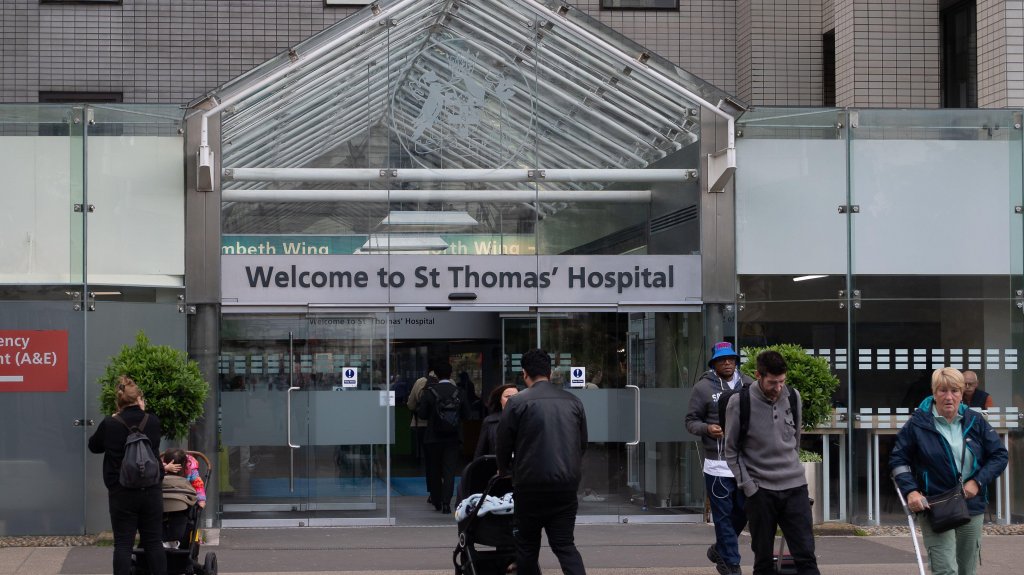Is International Airlines Group worth investing in right now?
Shares in the British Airways owner International Airlines Group, otherwise known as IAG, are still trading a third below their value before the pandemic. But since this column last rated the stock as a buy six months ago, the shares have rebounded by 30 per cent. So can the FTSE 100 group climb back to its previous heights?
IAG is now the best performer among local airlines over the past year. Shares in easyJet have returned 9 per cent in the past 12 months, while the Dublin-listed Ryanair has dropped 8 per cent. But IAG is singular in London’s stock market for its sheer scale. It is one of the three big European airline operators, alongside Air France-KLM and the German group Lufthansa.
Most of IAG’s revenue comes from British Airways — which made €1.4 billion in operating profit on revenue of €14.3 billion in its 2023 financial year — followed by Iberia, Vueling and Aer Lingus.
Travel demand came back with a vengeance when lockdown restrictions were lifted, with operating profits doubling in 2023 to a record €3.5 billion. So far this demand has held up well, with passenger revenue up 11 per cent in the first half of this year, alongside a 7.5 per cent increase in capacity. This meant passenger revenue per available seat kilometre, an important industry metric, rose 2 per cent to €8.33.
The group’s operating margin did drop 0.4 percentage points to 8.9 per cent thanks to higher costs. The group has been investing to improve service levels, hiring an additional 7,000 staff in the first six months of the year, with employee costs rising by roughly 13 per cent.
Still, it looks on track to achieve its medium-term targets of operating margins between 12 and 15 per cent, return on invested capital somewhere between 13 and 16 per cent, and capacity growth — measured by available seat kilometres — of 4 per cent to 5 per cent per annum up until 2026. All, other than its margin, landed on target for the first half of the year.
The shares trade at just 4.8 times forward earnings, on the lower end of London-listed airline operators and at a discount to its peer Lufthansa, which trades at a multiple of 6.9. Air France-KLM trades at a lower 3.4 times forward earnings after the shares took a hit during the summer, as a significant number of would-be visitors avoided booking trips to Paris during the Olympics.
IAG also restored shareholder payouts for the first time since the pandemic this summer, declaring an interim dividend of 3 cents per share. The shares now offer a forward dividend yield of 2.8 per cent. The balance sheet has also been recovering: net debt stood at €6.4 billion as of the end of June, compared with €9.2 billion at the same point last year.
The group will also have more cash now that it has abandoned its plan to buy Air Europa; the board concluded that it would not be in the best interest of shareholders, following concerns among European Union officials around its impact on competition. IAG did have to pay a €50 million termination settlement expense.
Analysts now expect that at the end of the 2024 financial year, its net debt to adjusted cash profit ratio will stand at 1.1, well below the group target of less than 1.8.
There is some speculation among City analysts that IAG could announce a share buyback, given the strength of the balance sheet, strong trading and the relative weakness in the share price. Buying back 6 per cent of the market cap, worth around €600 million, would only increase its leverage by 0.1, according to analysis by the Bank of America. Advice Buy Why Healthy travel demand and improving balance sheet
It may be one of the lesser-known names in the FTSE 250, but 4imprint’s impressive growth rate and generous dividend policy warrant investors’ attention.
The £1 billion company, which operates mainly in North America and the UK and Ireland, made $1.3 billion in revenue and $136 million in operating profit last year from selling promotional merchandise to businesses.
Think corporate branded mugs, notebooks and pens handed out at industry conferences. This market is large and fragmented – 4imprint reckons that last year industry trade associations in the United States and Canada were worth about $26 billion and served by 26,000 distributors.
Of these, only about 1,000 have annual revenue more than $2.5 million. It is a similar picture in the UK and Ireland, though the total market is much smaller, at about $1 billion.
Its business model is asset light: orders are typically “drop-shipped” directly to customers, which means the company does not have to invest much in inventory and can provide short lead times to its clients.
A high proportion of orders are also paid via credit card, which means the company also has low working capital requirements. This creates a highly cash-generative business model, with a cash conversion rate that has averaged 91 per cent over the past three years.
Recent growth has been impressive, with sales notching a compound annual growth rate of 12 per cent over the past four years, according to analysis by the broker Panmure Liberum.
Its half-year results last month showed a 5 per cent rise in revenue to $668 million, with a 10 per cent rise in operating profit to $70 million. The shares are attractive from an income perspective too. Management increased its interim dividend by 23 per cent to 80 cents per share in August and the shares now trade at a forward yield of 3.7 per cent.
City analysts anticipate that it will end the year with $136 million in net cash, some of which may be paid back to shareholders in the shape of a special dividend next year. Advice BuyWhy strong growth in large, fragmented market




Publicar comentario